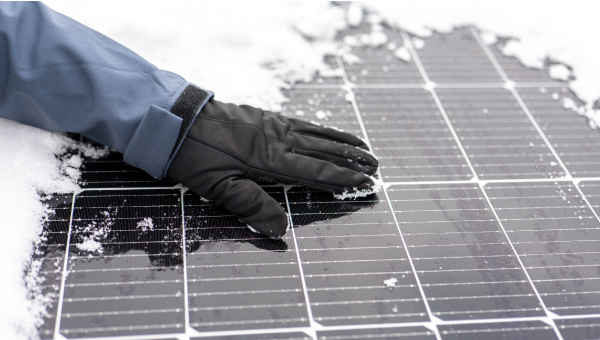Key takeaway: A key challenge of an operations and maintenance (O&M) program is managing talent resources; operating an O&M program in the winter helps prevent emergencies during the high season and helps smooth out talent utilization throughout the year.
The rapid growth and continued consumer demand for solar will lead to increased opportunities for operations and maintenance (O&M), as many arrays reach the latter years of their useful lives.
Whether you do O&M as a reputation-protecting strategy or have turned it into a revenue-generating business unit, most Contractors will need to consider talent utilization and its impact on their overall business. While reactive maintenance is a year-round task, the best time to run a preventative O&M program is in the winter (ie off-season), even if you install new arrays throughout the year.
Why winter is the best time for O&M
Here are three reasons why it’s best for Contractors to do as much O&M in the winter rather than summer or year-round, if they can avoid it.
1. More efficient talent allocation
Over 70% of Scanifly Contractors with O&M departments report pulling Installers from new build jobs to help with reactive O&M visits; when this happens in the summer months, it can severely limit revenue growth.
Moving to a winter O&M program flips this equation. With solar being mostly a seasonal business (whether due to geography or customer purchasing patterns), you can create a preventative maintenance program, thus alleviating many of the urgent fixes and maximizing Installers’ ability to focus on new installs.
2. Winter is maintenance and planning season
For most of the United States, inclement weather tends to pick up most in the fall and early winter, whether that’s hail storms in Texas, tornadoes in the Midwest, or hurricanes and winds along the eastern seaboard.
All of this means one thing: customers are in maintenance mode.
As a Contractor providing O&M services, you can lean into a mindset of fixing and maintaining; your customers may already be thinking about potential roof or array issues anyway.
From an operations perspective, this means an easier time booking appointments (and possibly more flexibility from customers). And from a reputation perspective, reaching out for a winter O&M program is a good way to show customers you care about them and understand their needs.
3. Less competitive marketing environment
In the late winter, spring, and early summer, the vast majority of solar contractor messaging is focused on customer acquisition. If you’re trying to advertise an O&M program, whether through organic or paid channels, your message will be competing against Contractors advertising for new customers. You may cannibalize your own marketing efforts as well.
When you have a winter O&M program, you can advertise it in the fall, potentially avoiding the noise from other Contractors. The result could be lower marketing costs as well, and a better use of your marketing team resources.
Get more from your business with an O&M program
In the past, many Contractors grew considerably, installing more systems year over year. With millions of arrays operational and hundreds of thousands of new arrays coming online each year, there’s more opportunity than ever for quality-focused companies.
As O&M grows in necessity for aging systems, Contractors will need to improve how they allocate resources and mental energy to this business line. One of the critical considerations is when to prioritize new installations versus maintenance; considering the economics of solar installations and the industry’s seasonality, a winter O&M program allows maximum flexibility to earn revenue year-round and better utilize talent.
-Turn your O&M program from a cost center into a revenue driver: Get the guide HERE–






